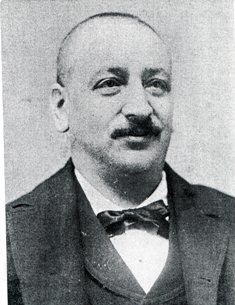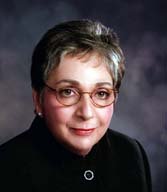Encyclopedia of Southern Jewish Communities - Virginia
Overview >> Virginia
 Dr. John de Sequeyra,
Dr. John de Sequeyra, colonial physician in Williamsburg
Although it was the largest and most populous of the thirteen colonies, Virginia did not develop a significant Jewish community during the colonial era. The reason was primarily economic as Virginia did not have a thriving port city like Charleston, Philadelphia, and New York, which all attracted small but thriving Jewish communities. Also, the Church of England was the established church in Virginia and religious minorities had to pay taxes to support it. In 1786, Thomas Jefferson wrote Virginia’s Statute for Religious Freedom which finally granted religious liberty to Jews in the state. With this new freedom, and the rise of mercantile centers in Richmond and Norfolk, the state’s Jewish population began to grow slowly. A handful of Jews settled in Virginia during the colonial and early republic eras. Dr. John de Sequeyra settled in Williamsburg in 1745, serving as one of the colony’s leading physicians. In addition to his medical career, de Sequeyra was credited by Thomas Jefferson with introducing the tomato as a vegetable to Virginia. In Norfolk, Moses Myers became a major exporter and importer who did business in several sea ports on both sides of the North Atlantic. Though he wasn’t related to Moses, Samuel Myers became a prosperous merchant himself in Petersburg soon after arriving in 1789. Jews lived in Richmond by the 1760s, and established the state’s first Jewish congregation in 1789, only the sixth to be founded in the United States.
Virginia’s Jewish population grew significantly with the arrival of a wave of immigrants from the German states in the 19th century, increasing from 200 people in 1790 to perhaps 2,000 at the time of the Civil War. These German Jews established congregations in Norfolk (1848), Petersburg (1858), and Alexandria (1859). During the Civil War, many Virginia Jews, especially those in Richmond, were swept up in the South’s cause. Reverend Max Michelbacher of Richmond’s Beth Ahabah was a staunch supporter of secession and the South, and even prayed “that the Almighty may…drive away from our land the Northern armies that now disturb our tranquility” during one wartime service. Over 100 Richmond Jews fought for the South, most in the Richmond Grays or Light Infantry Blues. A special section of Richmond’s Hebrew Cemetery was created for Jewish Confederate soldiers from across the South who died during the war. Despite this loyalty to the Confederate cause, as the southern war effort faltered, Jews became scapegoats as some members of the Confederate congress in Richmond attacked them as disloyal profiteers. On October 18, 1863, Beth Ahabah held a meeting to discuss a response to the rise of anti-Semitism after the southern losses at Vicksburg and Gettysburg. A few months later, the Richmond Jewish community donated $2,000 to help care for sick and wounded soldiers.
Virginia’s Jewish population grew significantly with the arrival of a wave of immigrants from the German states in the 19th century, increasing from 200 people in 1790 to perhaps 2,000 at the time of the Civil War. These German Jews established congregations in Norfolk (1848), Petersburg (1858), and Alexandria (1859). During the Civil War, many Virginia Jews, especially those in Richmond, were swept up in the South’s cause. Reverend Max Michelbacher of Richmond’s Beth Ahabah was a staunch supporter of secession and the South, and even prayed “that the Almighty may…drive away from our land the Northern armies that now disturb our tranquility” during one wartime service. Over 100 Richmond Jews fought for the South, most in the Richmond Grays or Light Infantry Blues. A special section of Richmond’s Hebrew Cemetery was created for Jewish Confederate soldiers from across the South who died during the war. Despite this loyalty to the Confederate cause, as the southern war effort faltered, Jews became scapegoats as some members of the Confederate congress in Richmond attacked them as disloyal profiteers. On October 18, 1863, Beth Ahabah held a meeting to discuss a response to the rise of anti-Semitism after the southern losses at Vicksburg and Gettysburg. A few months later, the Richmond Jewish community donated $2,000 to help care for sick and wounded soldiers.
 Baruch Ney of Harrisonburg
Baruch Ney of Harrisonburg
After the war, German Jews continued to settle in Virginia along with a new wave of Jewish immigrants from Eastern Europe. Several bypassed the established communities of Richmond and Norfolk to open retail stores in smaller towns in the state’s hinterlands. A native of Württemberg, Baruch Ney opened a men’s clothing store in Harrisonburg in 1874 which grew into a leading department store that remained in business until the 1950s. Ney’s descendants continued to own retail clothing stores in Harrisonburg as late as 2008. Samuel Heiner, an immigrant from Odessa, Russia, moved to Martinsville in 1888 and became the town’s leading merchant, eventually owning stores in several towns in the area. Isaac Bachrach, who emigrated from Germany in the 1870s, moved to Roanoke in 1880, where he opened a dry goods store downtown and eventually became one of the city’s most prominent business leaders. In the mid-1870s, Joseph Barth took over the new store established by his recently deceased brother in Staunton. Barth turned the business into the town’s premier clothing store. In Lynchburg, Jewish merchants owned half of the town’s clothing stores in 1899. During this period, Jews founded congregations in Staunton (1876), Harrisonburg (1877), Charlottesville (1882), Roanoke (1889), Pocahontas (1892), Newport News (1893), Danville (1893), Portsmouth (1894), and Lynchburg (1897).
In the early 20th century, new immigrants continued to settle throughout Virginia. By 1927, approximately 25,000 Jews lived in the state, three-quarters of whom lived in either Richmond or the Hampton Roads area. Nevertheless, they established new congregations in Bristol (1904), Hampton (1904), Hopewell (1916), Suffolk (1916), Martinsville (1927), Fredericksburg (1936), and Winchester (1930s). In Danville, Petersburg, Richmond, Roanoke, and Norfolk, these immigrants established new Orthodox congregations that co-existed with the older, Reform congregations.
In the early 20th century, new immigrants continued to settle throughout Virginia. By 1927, approximately 25,000 Jews lived in the state, three-quarters of whom lived in either Richmond or the Hampton Roads area. Nevertheless, they established new congregations in Bristol (1904), Hampton (1904), Hopewell (1916), Suffolk (1916), Martinsville (1927), Fredericksburg (1936), and Winchester (1930s). In Danville, Petersburg, Richmond, Roanoke, and Norfolk, these immigrants established new Orthodox congregations that co-existed with the older, Reform congregations.
 Virginia Beach Mayor Meyera Oberndorf
Virginia Beach Mayor Meyera Oberndorf
Although they sometimes faced anti-Semitic restrictions from certain clubs or neighborhoods, Virginia Jews became an integral part of civic life in the state. IN 1836, Uriah P. Levy, a Jewish naval captain, purchased and restored Thomas Jefferson’s Monticello in Charlottesville. The Levy family helped ensure that this important historic property was preserved for future generations. Jews have also been active in politics, serving as mayors of several Virginia cities including Danville, Harrisonburg, Newport News, Lynchburg, Martinsville, and Winchester. Meyera Oberndorf was Virginia Beach’s longest serving and first female mayor, leading the city from 1988 to 2009. William Lovenstein spent almost thirty years representing Richmond in the House of Delegates in the late 19th century, while Elliot Schewel of Lynchburg and Alan Diamonstein of Newport News both spent several decades in the state legislature in the late 20th century. Three Virginia Jews have served in the U.S. House of Representatives: Norman Sisisky, who represented Petersburg in congress from 1983 to 2001; Eric Cantor of Richmond, who served as House Majority Leader from 2011 to 2014; and Elaine Luria, who represented Virginia's 2nd Congressional District (including Virginia Beach) from 2018 to 2022.
 Henry Clay Hofheimer II
Henry Clay Hofheimer II
In addition to politics, many Virginia Jews have made significant contributions to the larger community. In Norfolk, Charles Kaufman and Henry Clay Hofheimer II reshaped the city through urban renewal and downtown redevelopment programs after World War II. Together with Harry Mansbach, they helped create the Eastern Virginia Medical School in 1973. In Fredericksburg, real estate magnate Carl Silver donated land and money to build the Cancer Center of Virginia. In 2006, he donated $2 million for the Carl D. Silver Health Center, which provides free health care for the poor. In 1960, Arthur Taubman, who started the chain of Advance Auto Parts stores, joined Roanoke’s “Committee of 12,” an informal group that worked for nonviolent integration of the city’s public facilities. Taubman also served as chairman of the Roanoke Valley United Negro College Fund. His son Nicholas Taubman served as U.S. Ambassador to Romania from 2005 to 2008, and has also been a major supporter of the Roanoke Art Museum, which was renamed the Taubman Museum of Art.
Virginia’s Jewish population has exploded in recent decades, growing from 31,000 people in 1960 to over 95,000 in 2013. Much of this growth has been in the Washington D.C. suburbs of northern Virginia. With the expansion of the federal government and the construction of the Capital Beltway, federal workers and contractors flooded into suburban northern Virginia during the post-World War II era. In northern Virginia, new congregations were established in Arlington (1940), Falls Church (1962), Fairfax (1964), Reston (1967), Herndon (1979), Springfield (1981), Centreville (1995), Leesburg (1997), and Warrenton (1999). This suburbanization trend also affected Hampton Roads as a number of Jews from Newport News and Norfolk have moved out to Virginia Beach, which saw its first Jewish congregation chartered in 1949. As in other parts of the South, these shifting demographics have led to the decline of many smaller Jewish communities and even the closing of synagogues in Suffolk, Portsmouth, Danville, Hampton, Petersburg, and Pocahontas. Nevertheless, all of these cities except Suffolk and Pocahontas still have active Jewish congregations. At the same time, increasing numbers of Jewish college professors and administrators have helped revitalize the Charlottesville Jewish community and led to new congregations in Williamsburg (1959) and Blacksburg (1979). While Virginia’s Jewish population remains in transition, with growing numbers in the north, and consolidation in the southeastern and southern parts of the state, Jewish life continues to thrive throughout the commonwealth.
Virginia’s Jewish population has exploded in recent decades, growing from 31,000 people in 1960 to over 95,000 in 2013. Much of this growth has been in the Washington D.C. suburbs of northern Virginia. With the expansion of the federal government and the construction of the Capital Beltway, federal workers and contractors flooded into suburban northern Virginia during the post-World War II era. In northern Virginia, new congregations were established in Arlington (1940), Falls Church (1962), Fairfax (1964), Reston (1967), Herndon (1979), Springfield (1981), Centreville (1995), Leesburg (1997), and Warrenton (1999). This suburbanization trend also affected Hampton Roads as a number of Jews from Newport News and Norfolk have moved out to Virginia Beach, which saw its first Jewish congregation chartered in 1949. As in other parts of the South, these shifting demographics have led to the decline of many smaller Jewish communities and even the closing of synagogues in Suffolk, Portsmouth, Danville, Hampton, Petersburg, and Pocahontas. Nevertheless, all of these cities except Suffolk and Pocahontas still have active Jewish congregations. At the same time, increasing numbers of Jewish college professors and administrators have helped revitalize the Charlottesville Jewish community and led to new congregations in Williamsburg (1959) and Blacksburg (1979). While Virginia’s Jewish population remains in transition, with growing numbers in the north, and consolidation in the southeastern and southern parts of the state, Jewish life continues to thrive throughout the commonwealth.

